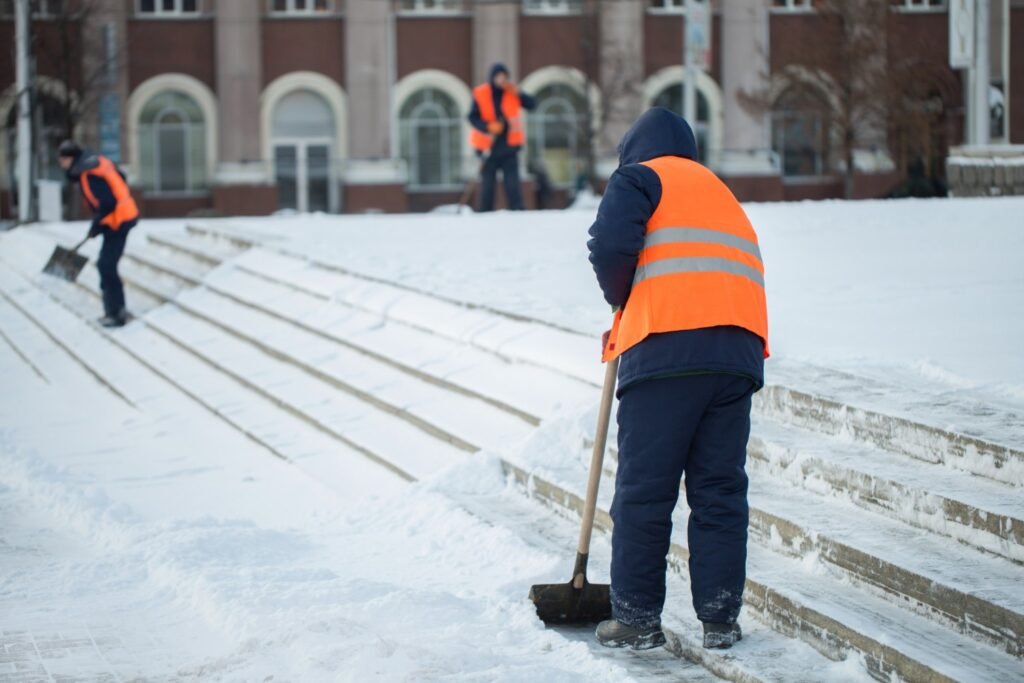At first glance, small facility problems in schools seem harmless. A loose tile. A flickering light. A slow leak from the ceiling.
But just like a soft snowfall accumulating on a roof, these minor issues compound over time—until the entire structure starts to bend, break, or collapse. And by then, it’s no longer a small problem—it’s a crisis.
This article explores how overlooked facility issues silently threaten school budgets, safety, and learning continuity—and what school leaders can do today to prevent costly consequences tomorrow.
The Psychology of Delay: Why Small Problems Are Ignored
School administrators face endless to-do lists and tight budgets. It’s easy to prioritize what screams the loudest. But deferred maintenance is a silent budget-killer.
Common reasons facility issues go unaddressed:
- “It’s just cosmetic.”
- “We’ll fix it next year.”
- “There’s no money for that now.”
Yet those small cracks or persistent leaks don’t disappear—they grow. Like snow on a flat roof, they accumulate unnoticed… until the pressure causes damage beyond repair.
Examples of Small Issues That Escalate
Here are real-world facility problems that started small—but led to major consequences:
1. Roof Leaks
What starts as a damp ceiling panel can lead to:
- Mold outbreaks
- Electrical damage
- Classroom closures
- Insurance claims
💡 A $200 repair can become a $25,000 roof replacement.
2. Faulty HVAC Systems
Ignored filter replacements or noisy units can:
- Lower indoor air quality
- Spread allergens
- Increase absenteeism
- Spike energy bills
❄️ Cold classrooms = distracted students + parent complaints.
3. Cracks in Walls or Foundation
Hairline cracks are often dismissed—until:
- Water seeps in during winter
- Structural shifts occur
- Entire walls require reinforcement
🧱 What looked like “just settling” becomes a six-figure construction project.
Why Winter Makes Everything Worse
In the northern U.S., freezing temperatures and snow reveal what summer hid:
- Leaks freeze and expand
- Water seeps into unsealed joints
- Snow weight stresses aging roofs
- Ice dams form due to poor insulation or clogged gutters
🏫 Schools that seemed fine in August may suffer emergencies by January.
Also read: How Preventive Maintenance Protects Students and Budgets
How to Identify Small Problems Early
🔍 Regular Facility Walkthroughs
Use seasonal checklists to inspect:
- Roofs and ceilings
- Window seals
- Floor transitions
- Water heaters and boilers
- Exterior cracks
➡️ Walkthroughs should be conducted before winter and after each snowfall.
📋 Create a Digital Maintenance Log
Track and photograph each minor issue—even if you don’t fix it immediately. This helps:
- Spot patterns over time
- Justify budget requests
- Prioritize repairs with data
🧠 Documentation is your best defense against deferred maintenance.
Smart Tools for Managing Small Facility Problems in Schools
Here are 3 powerful (and budget-friendly) solutions available on Amazon that help schools avoid small problems turning into big ones:
✅ Moisture Detection Sensor (WiFi Smart Leak Detector)
Instantly notifies facility teams of leaks in bathrooms, basements, or ceilings—before visible damage occurs.
✅ Thermal Infrared Camera Attachment for Smartphones
Helps detect heat loss, pipe leaks, or electrical issues behind walls—ideal for winter inspections.
✅ Digital Asset Maintenance Software (Cloud-Based)
Simple platforms allowThe True Cost of Inaction
Let’s look at a conservative example:
- Year 1: Minor leak repair estimated at $300
- Deferred
- Year 2: Mold remediation needed — $3,000
- Deferred
- Year 3: Ceiling collapse in classroom — repair + lawsuit = $45,000+
📉 Not fixing small things can bankrupt facility budgets, damage reputations, and risk student safety. schools to log, assign, and track repair tasks from any device. Some start under $50/month.
💡 These aren’t expenses. They’re investments in continuity, safety, and credibility.
What Can You Do Now?
You don’t need to be an engineer to act.
Here’s what school leaders and facility managers should do this season:
- Schedule a Winter Maintenance Audit
- Create a digital map of known facility issues
- Assign small repairs to a rotating maintenance schedule
- Budget a contingency fund for minor repairs
- Invest in inspection tools to reduce dependence on guesswork
🎯 Don’t wait for the snow to melt to discover what’s broken.
Light Snow, Heavy Consequences
Small issues are rarely small for long. Snow doesn’t fall to destroy—it accumulates silently, becoming too much to bear. So do neglected facility problems in schools.
If you’re a school leader, building manager, or parent group, it’s time to rethink how we manage “small things.” Because they don’t stay small for long.
📩 Need help assessing your school’s facility risks?
Send us an email
Or subscribe to our newsletter to receive seasonal maintenance checklists and infrastructure planning guides.






